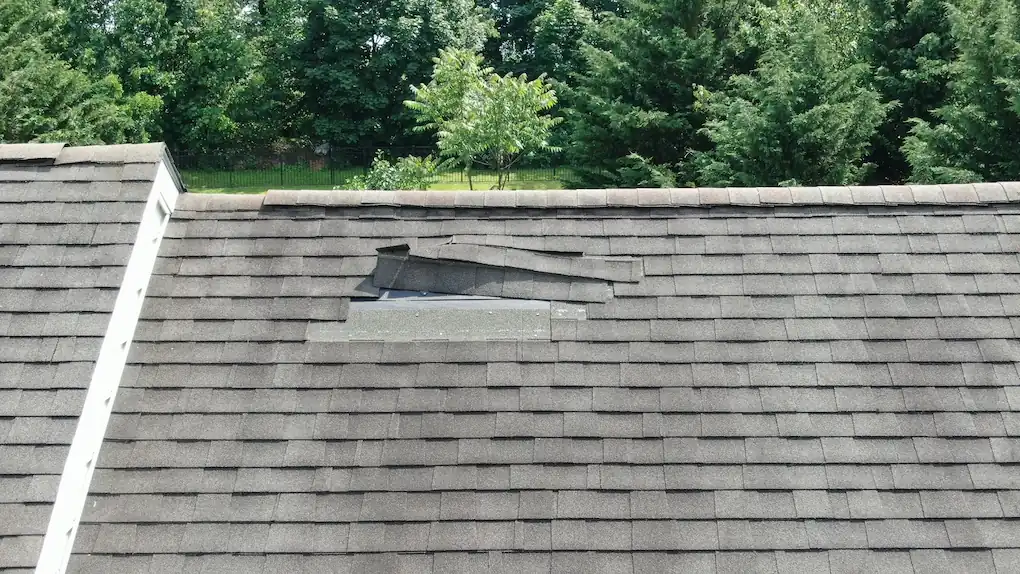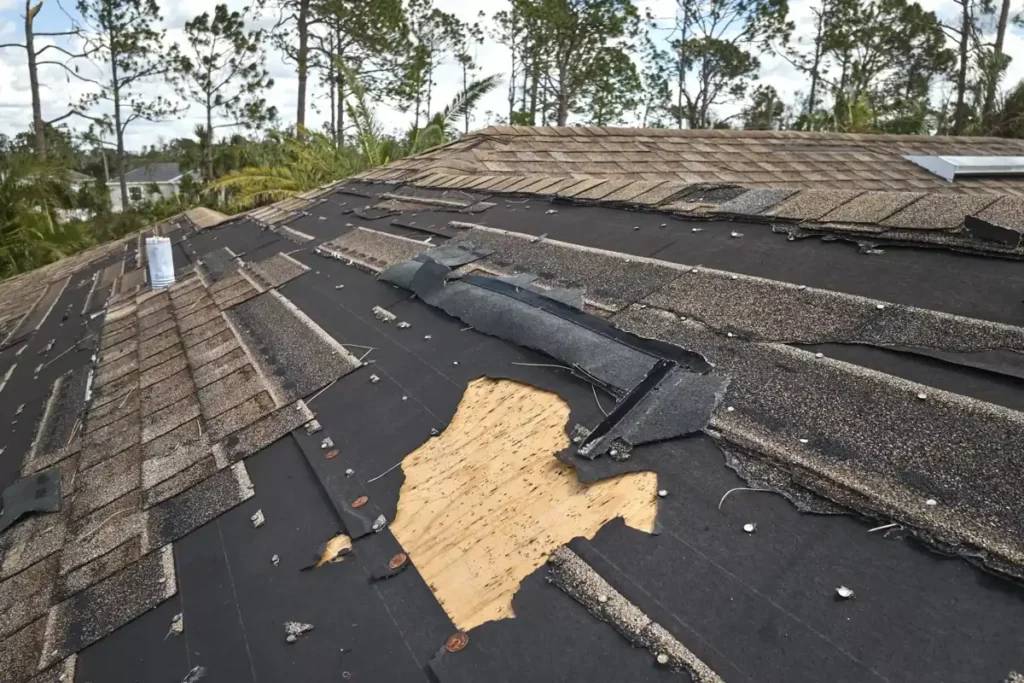When a storm hits, your roof is your home’s first line of defense. Whether it’s powerful winds, heavy rain, hail, or snow, storm damage can be sudden—and serious. Ignoring even small signs of roof damage can lead to major repairs, costly water damage, and mold growth inside your home.
In this article, we’ll guide you through everything you need to know about roof storm damage—how to identify it, what to do right after a storm, how to handle insurance claims, and how to protect your roof in the future.
1. Types of Storms That Commonly Cause Roof Damage
Not all storms are created equal. Different weather events impact your roof in different ways:
Wind Storms
High winds can tear off shingles, lift flashing, or even detach roofing materials. In severe cases, wind can create uplift that exposes the roof deck.
Hail Storms
Hail can cause dents, cracks, or granule loss on shingles. Even small hailstones can compromise roof integrity over time.
Heavy Rain
Prolonged rain can expose weaknesses in the roof system, causing leaks and moisture intrusion, especially around chimneys, skylights, and vents.
Snow and Ice Storms
Snow adds weight, while ice dams form along the edges and prevent proper drainage, leading to water backing up under shingles.
Hurricanes and Tropical Storms
A combination of extreme winds and rain can lead to severe structural damage, complete roof failure, or water penetration through multiple layers.
2. Signs of Roof Storm Damage
After a storm, knowing what to look for is crucial. Here are some of the most common indicators of damage:
-
Missing or lifted shingles
Often the most visible sign—gaps can expose the underlayment and roof deck. -
Shingle granule loss
Look in gutters or downspouts for granules that resemble coarse sand. -
Dents in flashing or vents
Hail or flying debris can dent metal components that protect vulnerable areas. -
Leaks or water stains inside
Check ceilings and walls for discoloration, bubbling paint, or dripping water. -
Debris accumulation on the roof
Branches, leaves, or debris can hide damage underneath. -
Soft spots or sagging areas
May indicate trapped moisture or structural compromise.

3. Immediate Steps to Take After a Storm
Here’s what you should do immediately after a storm to protect your home and prepare for repairs:
-
Inspect safely – Walk around your home and note any visible roof or gutter damage.
-
Take photos – Document everything, including the date, time, and location.
-
Cover exposed areas – Use tarps or plastic sheeting to prevent leaks if possible.
-
Avoid DIY roof work – Wet roofs are dangerous. Leave the inspection and repairs to pros.
If you’re unsure, call a roofing contractor for an inspection—it’s often free and can help you decide next steps.
4. When to Call a Roofing Professional
Some storm damage can be minor and cosmetic—but other issues can threaten the integrity of your entire home. Call a licensed roofer if:
-
Shingles are visibly missing, cracked, or curling
-
You see leaks, stains, or sagging inside
-
You’re hearing dripping sounds in attic spaces
-
Flashing or gutters are detached or damaged
-
You plan to file an insurance claim
A roofing contractor can perform a detailed inspection, provide a repair estimate, and document everything for your insurer.
5. Roof Insurance Claims for Storm Damage
Most homeowners insurance policies do cover storm-related roof damage, but there are important details to understand:
What’s Typically Covered:
-
Wind and hail damage
-
Rain damage due to roof compromise
-
Roof replacement (if damage is severe and meets your deductible)
How to File a Claim:
-
Review your policy and understand your deductible
-
Document all damage with photos and written notes
-
Get a professional roofing inspection report
-
Contact your insurance provider to open a claim
-
Schedule an adjuster visit to inspect the roof
-
Use a trusted roofer to handle the repair process and ensure quality
Common Issues:
-
Delayed claims due to documentation errors
-
Denied claims for “wear and tear” or lack of maintenance
-
Lowball offers for roof repairs
Tip: Work with a roofer experienced in insurance claims—they can often meet with your adjuster and advocate for full coverage.
6. Temporary vs. Permanent Repairs
Temporary Fixes:
-
Tarping the roof to stop leaks
-
Securing loose shingles or tiles
-
Patching around vents or skylights
These prevent further damage while you schedule a permanent repair.
Permanent Solutions:
-
Replacing damaged shingles
-
Reflashing chimneys and joints
-
Full roof replacement (if over 30% of the roof is damaged)
A reputable roofing company will walk you through your options, costs, and timelines. Don’t delay—waiting can void insurance coverage or lead to further interior damage.
7. How to Prevent Future Roof Storm Damage
While you can’t stop storms, you can prepare your roof for them:
-
Schedule annual inspections to catch small issues before they become big ones
-
Trim overhanging branches to prevent impact damage
-
Clean gutters regularly to prevent backup and pooling
-
Upgrade materials to wind-rated or impact-resistant shingles
-
Install proper attic ventilation to prevent ice dams in winter
Preventive maintenance is the best way to extend your roof’s life and avoid surprise storm costs.
8. Choosing the Right Roofing Contractor
Not all roofing companies are the same—especially when dealing with storm damage and insurance work.
Look for:
-
Licensing and insurance – Protect yourself from liability
-
Experience with storm repairs – Especially wind and hail
-
Strong reviews and local references
-
Assistance with insurance paperwork – From inspection to claim support
-
Warranties on materials and labor
A trustworthy contractor will prioritize your safety, explain your options clearly, and complete work that lasts.
Conclusion
Storms can damage your roof in subtle or serious ways—but knowing how to respond can save you thousands of dollars and a major headache. From identifying damage and documenting it, to working with your insurance and finding the right contractor, each step matters.
Don’t wait until a small leak becomes a full replacement. If you suspect roof storm damage, schedule an inspection today. A quick response is your best protection.




